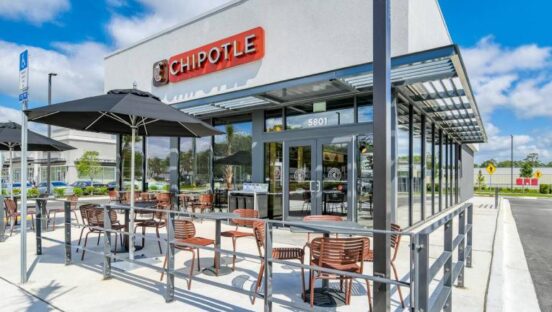








For many, working in a restaurant is a rite of passage for younger generations, from high school students staffing quick-service restaurants to college-aged adults finding the kind of shifts that fit their schedule. Entry-level positions are often among the lowest-paying, and when combined with the pressures of customer service can lead to significant turnover. What can a restaurateur do to increase staff retention rate, without raising wages? Finding new ways to connect and relate to your employees can go a long way toward your long term retention efforts.
Finding the Right Restaurant Staff
Every year about 14 million United States citizens –approximately 4.2 percent of the total American population– work in the restaurant industry. Unfortunately, restaurants endure approximately 74.9 percent annual employee turnover rate. That’s an incredible number and one that may not let up anytime soon. While the level of teenage workers in the United States workforce has rebounded over the last several years, staffing remains a critical concern for restaurant owners and operators.
There are many techniques to consider when bringing in new restaurant staff. Finding the right team means hiring people that can effectively work together in high-pressure environments without unnecessary friction. Part of that process includes introducing potential staff to your managerial style, as well as making sure employee candidates see the tasks that you may require of them. These steps help to determine if those individuals will work well with you and your existing staff, and more importantly if you can work with them. If you continue to have the same problems finding and integrating new staff members, consider reevaluating your process
Restaurant Staffing
From hiring parties to more exotic interview techniques, operators are understandably scrambling to get staff in the door. But when you consider that an average new hire costs around $6000 to onboard and integrate into your operations, especially in light of that turnover rate, then the need for a robust retention strategy becomes increasingly imperative. Before you start meeting with people, take the time to ensure that you have a clear corporate vision, and use that insight to build any potential ads you place in the public eye. This allows future staff to know exactly who you are and what you expect upfront.
A Brief History of Customer Service
Reflecting upon customer service expectations is important to do before diving deeper into the role that it plays in your restaurant. The idea of customer service is a moving target and one that has developed over time to what you see today. By and large, the concept of customer service has evolved to correspond with the industrial revolution, which through the creation of the middle class, gave people more time and resources to spend at their leisure. As such, that bred competition between brands looking to diversify and add options into a growing consumer market.
With the advent of digital technologies, the market has changed again from the relationship between customer and staff to include the online marketplace. Now customers look for digital parity or the ability to comparatively shop between what you have to offer and what they can find online. Customers operate in respect to their time, which is already subject to the attention economy and also to their budget; they want it on their terms at the lowest price feasible.
That doesn’t mean that the customer experience—real-world interactio—is any less valuable though. Engendering customer loyalty through excellence in service can yield up to a 17 percent increase in a customer’s willingness to spend. To capitalize on this, look for opportunities to make your customer service stand out, whether that’s by changing how your staff engages with customers, or through unique branding strategies that cater to the customer experience.
Setting the Scene
As mentioned above, restaurant work can be stressful. Part of encouraging new staff to join you is identifying people who can cope with a fast-paced environment. A quick survey of places like Dick’s Last Resort or the Weiner’s Circle in Chicago can provide some insights into how non-traditional customer service techniques create a playful environment that simultaneously allows workers to vent steam in real-time.
While it’s fair to say that many won’t mimic this model, some takeaways can be had about how your staff retention can benefit, especially in employee psychology. Do your workers need some time for mindfulness in their workday? If a customer is demanding, at what point should you intervene? Should you look at ways to limit or alter the way your staff directly engages with customers at all?
The Customer is Always Wrong
The idea that the customer is always right is a relatively modern concept in terms of human history, but one uniquely suited to consumer culture. Popularized by mid-20th-century advertising campaigns, the premise is simple: leave everyone satisfied, and they’ll come back for more. But those who have spent time in virtually any service industry will tell you that some people cannot be pleased. Some restaurants have played with that dynamic as part of their branding effort, by creating an environment where staff are intentionally blunt with customers.
Restaurants like Dick’s Last Resort or the Weiner’s Circle offer that kind of atmosphere, and one that seems to satisfy employees and customers alike. According to the site Glassdoor, the median ranking for employees at Dick’s Last Resort comes in at 4.0 out of 5.0. Comments from staff are generally positive and affirming, with one response reading, “Fun at work was almost mandatory.”
Of course, obstacles exist with engaging in this enterprise, namely that you limit your clientele to a smaller, more receptive demographic. Not everyone will respond well to sarcasm and ribald language in a leisure environment. But in perusing the “pros” responses to employment there, having fun and laughter are at the center of the positives. Consider using ice breaker questions with your staff to help loosen them up throughout the day, or as time allows, pull them aside to let them know their value at the moment. Capitalizing on these opportunities will help maintain a staff-positive environment.
The Invisible Staff
Considering that 86 percent of consumers use off-premises dining at least once per month, these stats indicate that, at least for some customers, less is more in terms of personal interaction. These customers are either on the go—think about lunch hour—or those who would rather dine in than go out. For these scenarios, a mostly staffless restaurant might work; it isn’t a new concept. In the early 1900s, places like The Automat existed, where staff and guests never met.
In many ways, these were the precursors to dark kitchens, the back-of-house response to off-premises dining. Operating spaces like this give employees time to take a breath from their day-to-day interactions and regroup. When possible, rotate your staff in and out of these positions as requested, to allow them a chance to decompress from their daily grind and break up the monotony of their routine.
Give Them Something To Do/See
Having something to do or see in a restaurant space can be critical to setting the right tone. Not only does it give your guests something to engage with, but it provides a distraction that can limit stress. Whether you opt for an exceptional theme or location, you can use a variety of ways for branding as a means of adding supplemental, experiential value to your restaurant as a destination spot.
For established brand identities, you can make small incremental changes. You can use interior design or mobile technology to introduce new themes to your restaurant. On a more practical front, you can embrace unique technologies like waitlisting apps, which allows hostess staff to communicate with patrons remotely. Your technology can also remain as innocuous as an automated kiosk, which allows guests the freedom to move at their own pace and have fun with their order.
Conclusion
Whether you alter your branding or start something fresh that speaks to a unique experience, measure those outcomes to see what works best for you and your retention goals. Set up an A/B test, either against one of your existing locations or to a business with a comparable clientele but a different style. More importantly, listen to your staff and work with them to mitigate their stress and enhance on-the-job experience, as much as you listen to your guests.
With such a high industry turnover rate, it’s imperative to look at different options to run your staff. In the effort to bring in new candidates for your team, stay transparent about job expectations, and look into unique possibilities to satisfy staffing needs. Once you’ve met those needs, you can attack your retention problems head-on, by using branding, mindfulness in your employee relations, and technology to your advantage.
Lee Leet is the CEO of QSR Automations and founded the company in 1996. QSR Automations has become an industry leader in technology stack integrations, after developing industry solutions that advance restaurant innovations and empowerment. ConnectSmart Kitchen, a kitchen automation solution, and DineTime, a guest management platform, to help restaurants efficiently manage resources, time, staff and the dining experience—have all have been created by QSR Automations.












